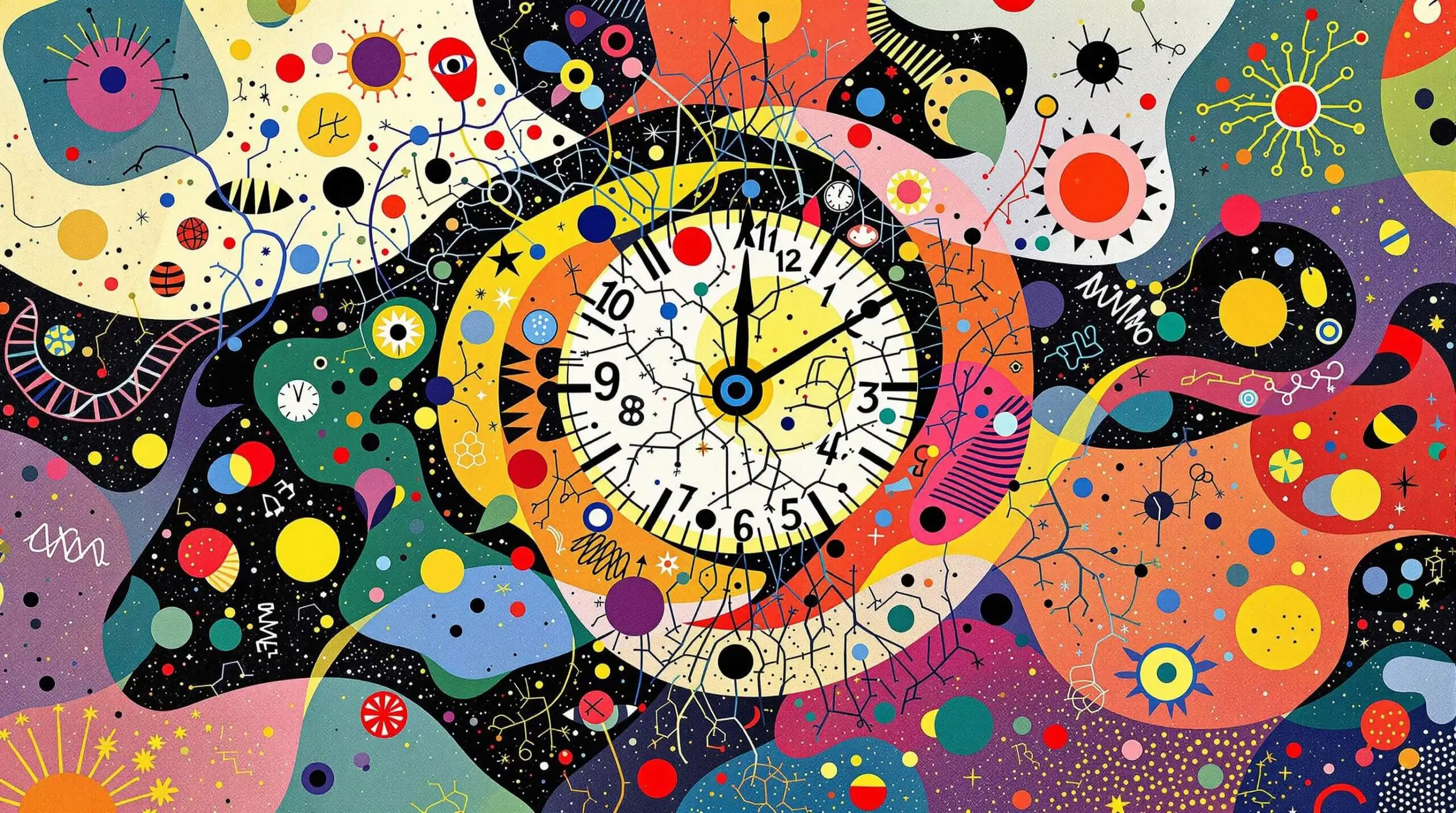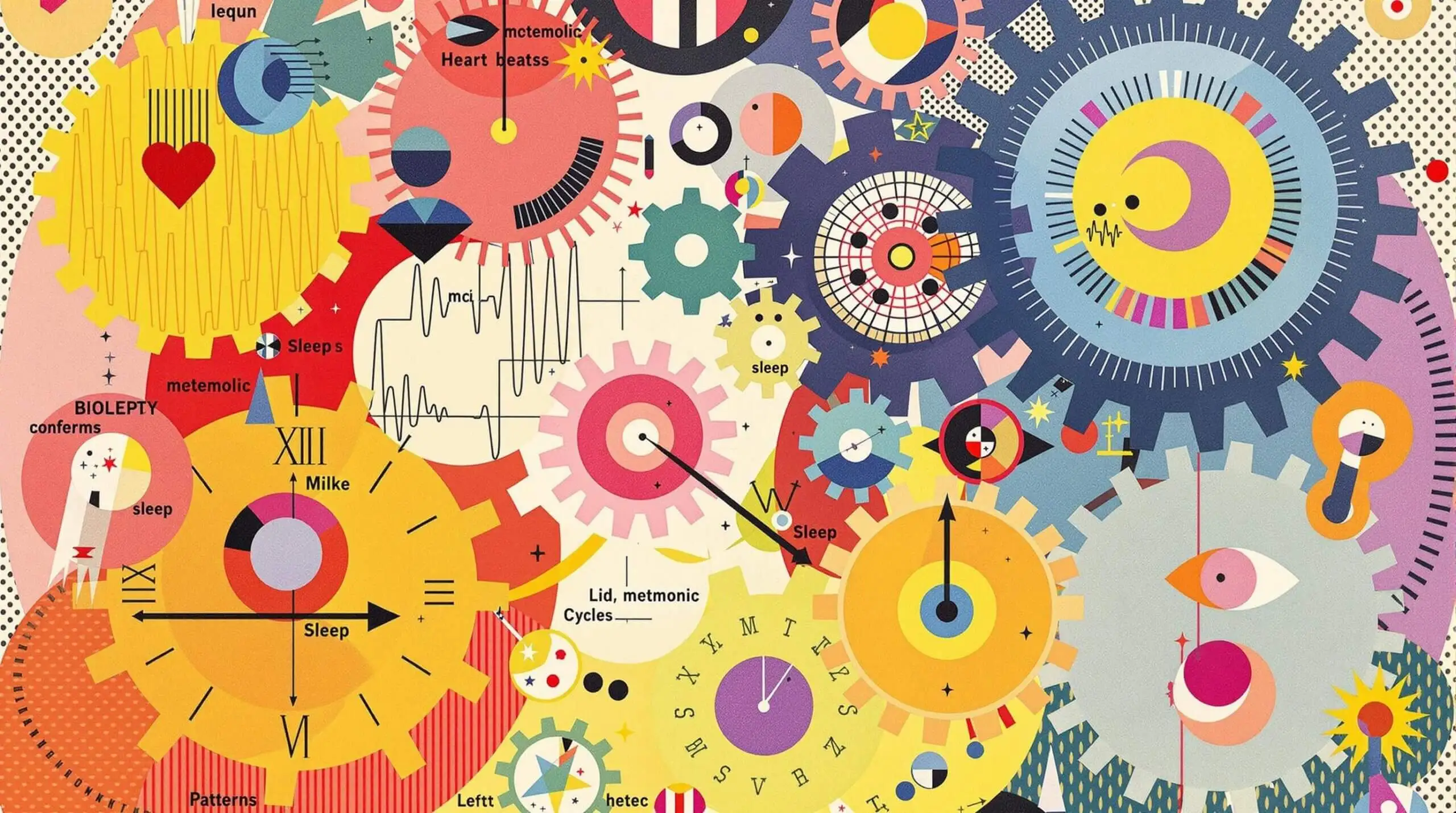The Clock of Life: Chronobiology Beyond Circadian Rhythms
Explore the intricate world of chronobiology and its impact on life beyond traditional circadian rhythms.

The Biological Rhythms That Shape Our Lives
What are Biological Rhythms?
Our bodies dance to an intricate orchestra of biological rhythms. While most people know about the 24-hour circadian rhythm that governs our sleep-wake cycle, it’s just one player in a vast biological symphony. These rhythms control everything from hormone production to body temperature, metabolism to mood – and understanding them could be key to extending our healthspan.
Beyond the Daily Clock
Scientists have identified multiple biological rhythms operating on different timescales. There are ultradian rhythms that repeat multiple times per day – like the 90-minute sleep cycles we experience at night. Then there are infradian rhythms that extend beyond 24 hours, such as monthly hormonal cycles. Each rhythm plays its part in maintaining our health and vitality.
Origins and Evolution
These biological timekeepers evolved over millions of years, helping organisms sync with environmental patterns. From single-celled bacteria to complex mammals, nearly every living thing shows some form of biological rhythmicity. Recent research indicates that disrupting these natural patterns might accelerate aging and increase disease risk.

The Science of Chronobiology
Understanding Our Internal Clocks
Chronobiology research has revealed that we have molecular clocks in nearly every cell of our body. These cellular timekeepers coordinate with a master clock in our brain – the suprachiasmatic nucleus. This hierarchical system ensures our biological processes happen at optimal times throughout the day.
Key Players in Biological Timing
Several genes and proteins form the core of our biological clocks. The CLOCK and BMAL1 genes work together like the gears in a watch, driving daily cycles of activity. Mutations in these genes can lead to sleep disorders, metabolic problems, and potentially shorter lifespans.
Impact on Health and Longevity
Circadian Rhythms and Aging
Research shows that maintaining strong circadian rhythms might slow the aging process. Studies in mice have found that animals with disrupted circadian genes age faster and die sooner than their normal counterparts. In humans, shift workers who regularly disrupt their circadian rhythms show higher rates of age-related diseases.
Metabolic Health
Our metabolism runs on a strict schedule. The body processes food differently depending on the time of day. Eating late at night, when our metabolism naturally slows, can lead to weight gain and metabolic disorders. Studies show that aligning our eating patterns with our circadian rhythm can improve metabolic health and potentially extend lifespan.
Quality sleep isn’t just about quantity – timing matters too. Research indicates that sleeping in sync with our natural circadian rhythm leads to better repair and regeneration of tissues. People who maintain regular sleep schedules show lower rates of cardiovascular disease and better cognitive function as they age.
Practical Applications of Chronobiology
Optimizing Daily Routines
Understanding our biological rhythms allows us to structure our days for maximum health benefits. Research shows that certain activities are more effective at specific times. Exercise in the late afternoon might yield better performance and recovery. Mental tasks often peak in the morning for most people.
Eating Patterns and Timing
Time-restricted feeding has emerged as a powerful tool for health optimization. Limiting food intake to an 8-12 hour window can strengthen circadian rhythms and improve metabolic health. Studies show this approach might increase lifespan even without reducing total calorie intake.
Strategies for Maintaining Healthy Biological Rhythms
Daily Practices for Optimal Rhythm Maintenance
- Wake up and go to bed at consistent times
- Get morning sunlight exposure within an hour of waking
- Eat meals at regular times each day
- Exercise at consistent times
- Limit blue light exposure in the evening
- Keep bedroom temperature cool and consistent
- Avoid caffeine late in the day
- Practice stress-reduction techniques regularly
- Maintain a consistent meal schedule
- Create clear transitions between work and rest periods
Environmental Factors
Light exposure stands as the most powerful signal for our biological clocks. Natural daylight helps maintain strong circadian rhythms, while artificial light at night can disrupt them. Temperature fluctuations also play a role – our body temperature naturally drops at night to promote sleep.
Special Considerations and Challenges
Travel and Jet Lag
Crossing time zones disrupts our biological rhythms, leading to jet lag. Research shows that recovery takes roughly one day per time zone crossed. Strategic light exposure and meal timing can help reset our clocks faster.
Shift Work Solutions
For those who must work irregular hours, maintaining healthy rhythms becomes crucial. Studies suggest that keeping a consistent schedule even on days off can help minimize the negative health impacts of shift work. Using light therapy and carefully timed meals can also help maintain better biological synchronization.
Future Directions in Chronobiology Research
Personalized Timing Strategies
Scientists are developing ways to determine individual chronotypes more accurately. This could lead to personalized recommendations for optimal timing of activities, from taking medications to exercising.
Therapeutic Applications
Research into chronotherapy – timing medical treatments to align with biological rhythms – shows promise. Studies indicate that timing cancer treatments to patients’ circadian rhythms can improve efficacy and reduce side effects.
Latest Research and Developments
- Gene therapy targeting circadian clock genes
- Development of circadian-aware lighting systems
- New medications designed to reset disrupted rhythms
- Advanced monitoring systems for biological timing
- Research into social zeitgebers (time cues)
- Studies on seasonal rhythm impacts on health
- Investigation of rhythm-based dietary approaches
- Development of chronotype-specific interventions
Conclusion: The Future of Biological Timing
Understanding and respecting our biological rhythms represents a crucial factor in health and longevity. The science of chronobiology has revealed that timing matters as much as what we do. As research continues to uncover the intricate relationships between our internal clocks and health, we’re better equipped to make choices that support our natural rhythms.
The evidence is clear: maintaining strong biological rhythms through consistent daily routines, appropriate light exposure, and well-timed meals can significantly impact our health span. By aligning our lives with these natural patterns, we can optimize our physical and mental performance while potentially extending our healthy years.